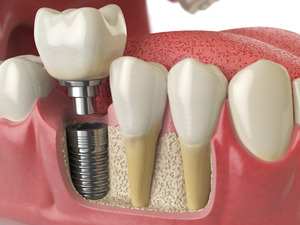
Tooth loss has been an issue for all of human history, and for almost that entire time enterprising people have looked for ways to replace teeth that have fallen out. Dental implants are one of the most celebrated methods of doing that in the modern era, but the practice of replacing teeth by placing things into the jaw surgically extends far beyond the 21st century.
If you really want to appreciate how far dental implants have come, here’s a brief history of this method of tooth replacement.
Ancient Implants
It’s almost impossible to know who came up with the idea of replacing teeth via implants, but archeological records have found examples of them dating back to ancient China. People in this era would carve small rods out of bamboo and place them into the jaw.
Similar things were done in ancient Egypt, except that these rods were made from gold, jade, and other precious materials.
Early Modern Implants
While dental implants are a very old idea, they weren’t all that useful for much of human history. Early Modern Europeans (1500s-1800s) experimented with gold, silver, and other alloys placed in the jaw in order to replace teeth, but each of these materials encountered the same issue: they were rejected by the body.
However, the more popular trend of the time was to use actual human teeth, harvested either from cadavers or from members of the lower class. This was of course long before successful organ implantation, meaning that the effectiveness of this procedure was also rather limited.
Contemporary Implants
The biggest leap forward in dental implant technology, and the one that paved the way for their success in the modern era, didn’t come until 1952. Dr. Per-Ingvar Branemark tested a titanium implant on rabbits, and when he went to remove it, found that he couldn’t. It turns out that the metal was not only accepted by the body, but actually managed to fuse with the surrounding bone tissue!
As he later discovered, the same principle applied to humans, meaning that titanium could be used to create implants much stronger than was previously thought possible. His research wasn’t widespread until the 1980s, at which point dental implants as we know them today came into existence.
Now that you know how far dental implants have come, you might have a much greater appreciation for how strong they are, and all the more appreciative of what they could do for you!
About the Author
Dr. Charles A. Parker sets himself apart from other dentists with his genuine compassion for his patients. He uses his extensive clinical expertise to take on cases that other dentists would deem too complex, ensuring that he can give a beautiful smile to everyone that he can. Dr. Parker received his dental degree from the University of Texas Health Science Center in San Antonio and maintains membership in the East Texas Dental Society.
If you have any questions about dental implants, he can be reached at his website or by phone at (903) 935-6351.
 Request A Free Consultation
Request A Free Consultation
